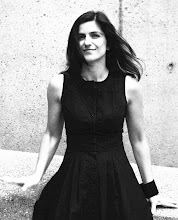Food Museum studio @Dartmouth (FALL 2015)
In many contexts and cultures (mostly in the past) the materials used for food and structures have not been that different: e.g. dry leaves for huts (architecture), and humid leaves to wrap food (gastronomy). Moving away from such situations, Western civilization has lately favored more processed food and more permanent structures. The “sealed” workspace type of buildings in Northern America that gradually or abruptly disengage inhabitants from the “living” has been very damaging for human beings. The disconnection from bio-processes, nature, the outdoor, and any kind of “change” often causes a number of psychological and biological issues to occupants: depression, lack of sleep, irregular bio-rhythms to name a few. The approach to both health problems and buildings has been reactive: Pills, psychoanalysis, exercise, and meditation to improve specific health issues; adding “green” to roofs and facades and designing villas as second homes in the outskirts as a respond to hostile buildings. The brutality of the robust, eternal structures is taken for granted. It enforces individuals to experience (or use) everyday causing all these problems. But is there a more proactive approach for the environments? What is the alternative to the tragedy of the sealed structure? What kinds of buildings do not need electric lights and can affect the nine-to-five work shifts? How can buildings relate more to living?
The studio investigates the aforementioned matters through the design of a public building, a Food Museum in Boston. The course consists of two parts: In the first students investigate building envelops, structures and materials. In the second, they apply this knowledge to overall synthesis of the building: how its tectonics and spatial organisation (program, circulation) relate to context (socio-cultural, political and technological conditions of the site). The students learn how to create strong design concepts and communicate them through a clear language of architecture. They demonstrate their ideas through physical models, 3dmodeling, fabrication, digital drawings, media representation, and public critiques. There is a field trip to visit and document the site, accompanied by presentations and talks by architects and academics.




1 Comments:
I always look forward to going out. A good tip would be to look out for those places with interesting concepts. The party halls in Bay area are pretty amazing. I came up here with a friend. The place was spacious and food was great.
Post a Comment
<< Home